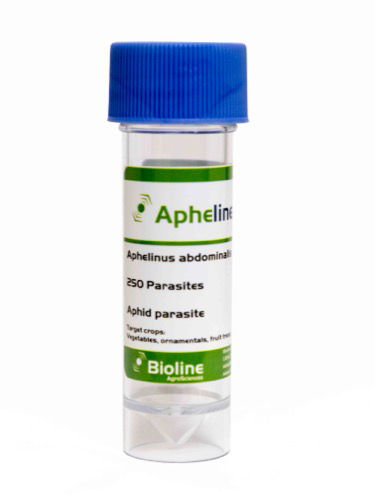Apheline AB (Aphelinus abdominalis) Vial of 250 Mummies/Adults
To order this product please call our Customer Services Team on 01903 726100 or email orders@fargro.co.uk
Specifications
Weight
0.008 kg
Colour
Green
Technical Comments
Most crops can be infested with aphids. Damage is caused in three ways: sucking plant sap when feeding, excretion of honeydew leading to sooty mould and some species can transmit plant viruses leading to distortion and disfigured plant growth. Biological control with parasites, predators and fungal pathogens are available depending on crop and environmental conditions. There are a large number of aphid species and identification can be important when parasitic wasps are to be used. Depending on the species there can be alternate plant hosts. Winged forms develop under conditions of high density to migrate to alternate hosts. Resistance to some insecticides is a serious issue with some species.
Activity / Control
Controls a wide range of aphid species including Macrosiphum euphorbiae (potato aphid) and Aulacorthum solani (glasshouse potato aphid). It has a very long life span. The adult wasp inserts its egg into the aphid, a parasite larva develops killing the aphid, producing a characteristic black 'mummy' with this species. An adult parasitic wasp later emerges through a round hole on the mummified aphid. The adult wasps also feed as a predator on aphids, killing one or more each day.
Application Method
Should be used at the first sign of aphids or better, as an early season preventative
Application Rate
1 wasp / 1 m2.
Bio Pest
Aphid
About
Parasitic wasps that control a wide range of aphid species including Macrosiphum euphorbiae (potato aphid) and Aulacorthum solani (glasshouse potato aphid). Aphelline AB also has a side effect against Myzus persicae (peach potato aphid). It has a very long life span.
The parasitised aphid hardens into a leathery black coloured mummy. The adult parasitic wasp emerges through a hole with a jagged edge at the rear of the mummy. The first mummies can be seen in the crop a minimum of 2 weeks after the first introduction.
